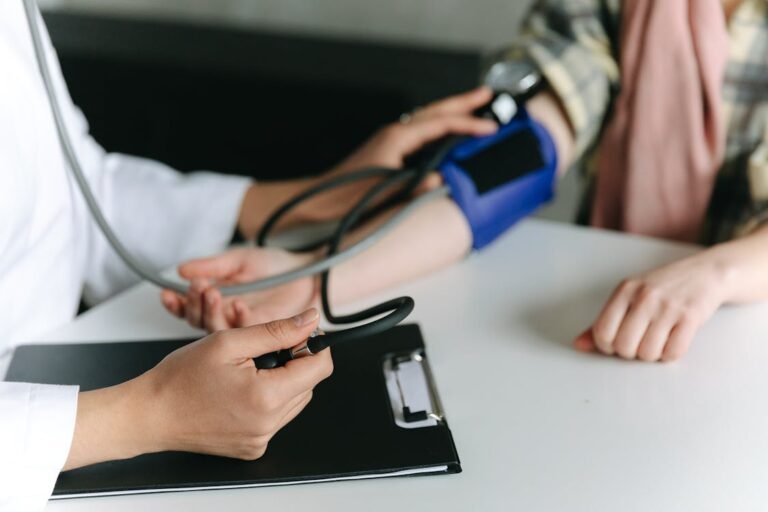Follow us and share.
What is Secondary Hypertension? Discover its Differences from Primary Hypertension
High blood pressure is one of the most common diseases worldwide, but not all forms of high blood pressure are the same.

While most cases are considered primary or essential hypertension, there is another less frequent type called secondary hypertension, which has an identifiable and treatable cause. In this article, we'll explain what secondary hypertension is, how it differs from primary hypertension, and how it can be effectively diagnosed and treated.
What is Secondary Hypertension?
The secondary hypertension It is a form of high blood pressure that occurs as a direct consequence of another medical condition. That is, in these cases, hypertension is a symptom of an underlying disease, such as kidney or endocrine disorders, or the effects of certain medications.
Unlike the primary (essential) hypertension, which develops progressively without a specific identifiable cause, secondary hypertension usually appears suddenly and may be more difficult to control with conventional treatments.
Differences between Primary and Secondary Hypertension
| Feature | Primary Hypertension | Secondary Hypertension |
|---|---|---|
| Cause | Unknown, associated with genetic and lifestyle factors | Related to another disease or the use of certain medications |
| Start | Progressive, over the years | Sudden and sometimes with very high values |
| Medication control | Generally responds well to treatment | May be resistant to standard medications |
| Age of onset | More common in people over 40 years of age | It can affect younger people, depending on the underlying cause. |
| Additional symptoms | Generally asymptomatic in early stages | You may experience symptoms related to the underlying disease. |
| Treatment | Lifestyle changes and medications | Treatment of the primary cause + blood pressure management |
Most Common Causes of Secondary Hypertension
Some diseases and conditions may be responsible for the increase in blood pressure in secondary hypertension, including:
- Kidney Diseases
- Chronic kidney disease
- Renal artery stenosis (narrowing of the kidney arteries)
- Glomerulonephritis
- Endocrine Disorders
- Hypothyroidism or hyperthyroidism
- Cushing's syndrome (excess cortisol)
- Pheochromocytoma (a rare adrenal tumor that releases adrenaline)
- Primary hyperaldosteronism
- Use of Medications and Substances
- Oral contraceptives
- Nonsteroidal anti-inflammatory drugs (NSAIDs)
- Nasal decongestants
- Drugs such as cocaine or amphetamines
- Sleep Apnea
- Repeated episodes of oxygen deprivation during sleep can contribute to high blood pressure.
- Vascular and Cardiovascular Anomalies
- Coarctation of the aorta (congenital narrowing of the aorta).
Symptoms of Secondary Hypertension
Although high blood pressure is usually silent, some signs may suggest the presence of secondary hypertension:
- Sudden onset of hypertension before age 30 or after age 55.
- Very high blood pressure (higher than 180/120 mmHg).
- Multi-drug resistant hypertension.
- Presence of signs of kidney disease, such as leg swelling or changes in urine.
- Frequent headaches, excessive sweating, and palpitations (may indicate pheochromocytoma).
Diagnosis of Secondary Hypertension
To determine if a person has secondary hypertension, doctors may order a series of tests, such as:
- Blood and urine tests (to assess kidney and hormonal function).
- Renal ultrasound or magnetic resonance imaging (to detect kidney problems).
- Ambulatory blood pressure monitoring (ABPM) (to rule out white coat hypertension).
- Thyroid and adrenal function tests.
Treatment: How is Secondary Hypertension Managed?
Treatment of secondary hypertension is based on correct the underlying cause, in addition to blood pressure control. Some strategies include:
- If the cause is kidney disease: management with diuretics, monitoring of kidney function and, in some cases, surgical interventions.
- If it is a hormonal disorder: specific therapy for the condition (e.g., surgery in cases of adrenal tumors).
- If it is due to medication: adjust treatment or switch to safer alternatives.
- If it is due to sleep apnea: use of CPAP devices to improve nighttime breathing.
At the same time, it is recommended to follow a healthy lifestyle, including:
✅ Low sodium, high potassium diet.
✅ Regular exercise and weight control.
✅ Avoid tobacco and alcohol.
✅ Stress management with relaxation techniques.
Conclusion: Can Secondary Hypertension Be Prevented?
In many cases, secondary hypertension is treatable and even reversible if the underlying condition is identified and treated early. Therefore, regular medical checkups are essential, especially if there is a family history or unusual symptoms.
If you have high blood pressure and conventional treatments aren't working, see your doctor to rule out secondary hypertension. Remember: Early diagnosis can make a difference in your quality of life.



